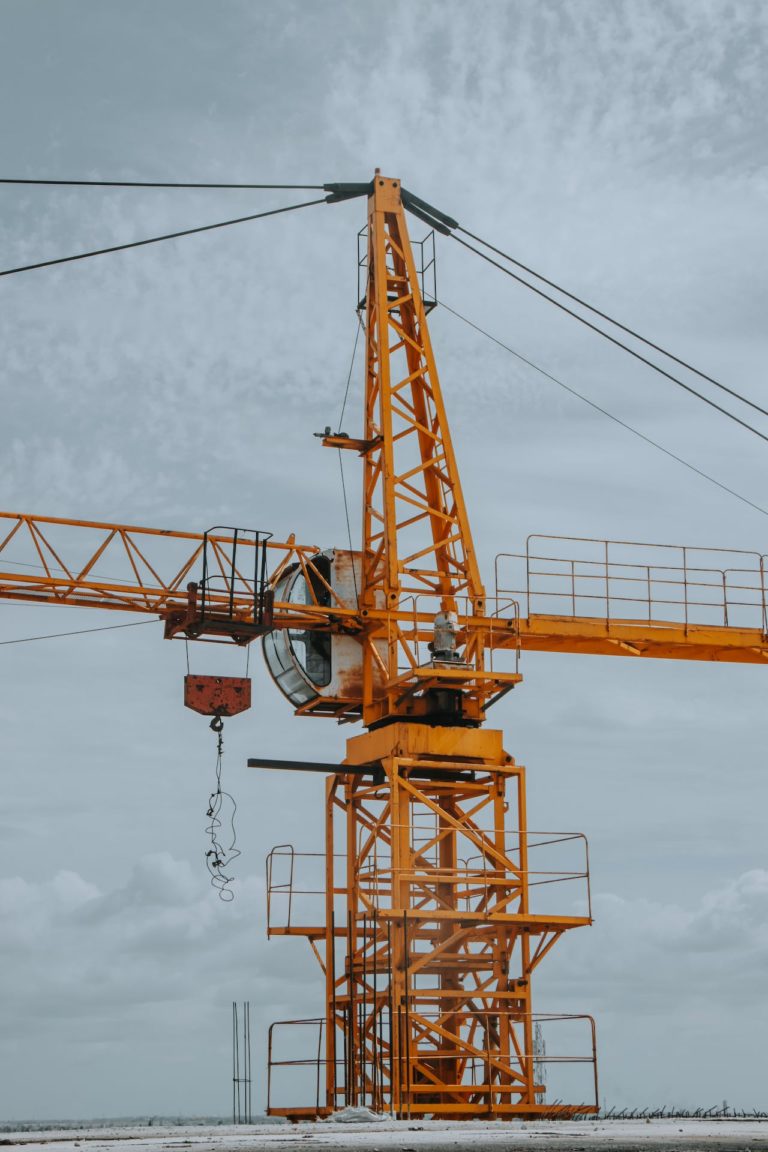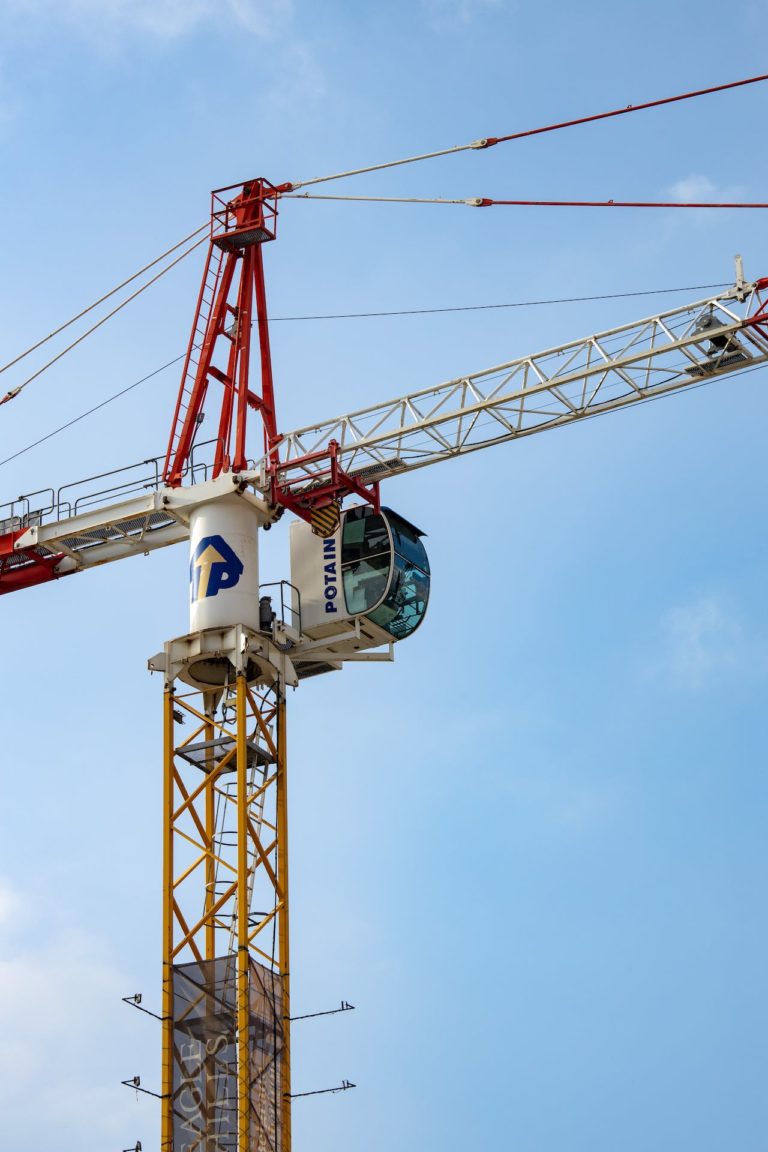Products
Optimized & Industry-ready Solutions
For All Your Complicated Needs
Autonomous crane operation is revolutionizing the construction and logistics industries by incorporating advanced technologies like artificial intelligence, machine learning, and the Internet of Things (IoT) to enhance safety, efficiency, and precision. These systems aim to minimize human intervention, thereby reducing the risk of accidents and human error.
Key Components:
1.Sensors and IoT: Autonomous cranes are equipped with sensors that provide real-time data on various parameters such as load weight, position, and environmental conditions. IoT connectivity allows these cranes to communicate with other machinery and central control systems, ensuring seamless coordination.
2.AI and Machine Learning: Artificial intelligence algorithms process vast amounts of data to make informed decisions. Machine learning enables the systems to improve over time by learning from past operations, adapting to different conditions, and optimizing performance.
3.GPS and Navigation Systems: High-accuracy GPS and navigation systems enable autonomous cranes to pinpoint exact locations for load pickup and delivery, ensuring precision in operations.
4.Computer Vision: Cameras and computer vision techniques allow cranes to identify objects, obstacles, and safe pathways. This capability is crucial for dynamic environments where conditions can change rapidly.
Benefits:
1.Safety: By reducing human involvement in potentially hazardous operations, the risk of accidents lowers significantly. Automated systems can also operate in extreme conditions unsuitable for human workers.
2.Efficiency: Autonomous cranes can operate 24/7 without fatigue, leading to increased productivity. They can perform tasks faster and more accurately than their human-operated counterparts.
3.Cost-Effectiveness: While the initial investment may be high, the long-term savings from reduced labor costs, decreased downtime, and fewer accidents make autonomous cranes a cost-effective solution.
4.Precision: With real-time data processing and advanced algorithms, autonomous cranes achieve higher levels of precision in load handling, reducing wastage and material damage.
Challenges:
1.High Initial Costs: The technology and infrastructure required for autonomous crane systems are expensive, making it a significant investment for companies.
But there will no longer be a need for a crane operator. A crane operator earns about $5500 every month. (average – it varies from country to country)
2.Regulatory Hurdles: Navigating the regulatory landscape can be complicated, as laws and guidelines for autonomous heavy machinery are still evolving.
3.Maintenance and Technical Issues: These systems require ongoing maintenance and can be susceptible to technical problems, necessitating a skilled workforce for repairs and troubleshooting.
Future Outlook:
As technology advances, the capabilities of autonomous cranes are expected to grow, incorporating more sophisticated AI models, improved sensors, and enhanced connectivity. The trend towards automation in various industries indicates a promising future for autonomous crane operations, making construction sites and warehouses safer and more efficient.
Revolutionizing Crane Operations: The Future of Autonomous Crane Systems
Introduction
Crane operations have traditionally involved significant risks to human life due to high elevations, heavy loads, and manual control systems. However, with advancements in automation, GPS technology, and laser-based control, we can now create a safer, more efficient, and precise solution. This article explores how to build a foundation software system that integrates GPS and LIDAR (Laser Imaging Detection and Ranging) for an autonomous crane, ensuring maximum accuracy and safety.
1. Foundation of the Autonomous Crane Software
The core of the autonomous crane system relies on integrating three key components:
- GPS Module – Determines the crane’s precise location and target coordinates.
- LIDAR Sensor – Scans the surroundings for obstacles, ensuring collision-free operation.
- Motor Controller – Moves the crane with precise commands from the software.
This system must process real-time data, make intelligent decisions, and ensure safety by stopping movement when necessary.
Hardware Components Required
- Raspberry Pi (or an industrial-grade microcontroller)
- GPS Module (e.g., RTK GPS for centimeter-level accuracy)
- LIDAR Sensor (e.g., RPLIDAR A1/A2)
- Motor Controller (e.g., L298N, TB6612FNG)
- Power Supply Unit
2. Integrating GPS and LIDAR for Precision Control
2.1 GPS for Navigation
A GPS module helps determine the crane’s location, guiding it toward its target position with minimal deviation. The RTK GPS system can achieve accuracy within centimeters, making it ideal for industrial applications.
GPS Data Processing
- The system reads NMEA sentences from the GPS module.
- The software extracts latitude and longitude.
- The Haversine formula calculates the distance to the target.
Python Code for Reading GPS Data:
import serial
import pynmea2
def read_gps():
ser = serial.Serial('/dev/ttyUSB0', 9600)
while True:
line = ser.readline().decode('ascii', errors='replace')
if line.startswith('$GPGGA'):
msg = pynmea2.parse(line)
return msg.latitude, msg.longitude
2.2 LIDAR for Obstacle Detection
LIDAR scans the environment and detects objects in real time. If an obstacle is within a safety threshold (e.g., 1 meter), the system will halt the crane’s movement.
Python Code for LIDAR Scanning:
from rplidar import RPLidar
lidar = RPLidar('/dev/ttyUSB0')
def scan_for_obstacles():
lidar.start_motor()
for scan in lidar.iter_scans():
for (_, angle, distance) in scan:
if distance < 1000: # Less than 1 meter
print(f"Obstacle at {angle}°: {distance} mm")
return angle, distance
lidar.stop_motor()
return None, None
3. Moving the Crane Towards Its Target
Once the GPS and LIDAR are functional, the crane can move toward its target safely.
Safety Checks Before Movement:
- Validate GPS signal (ensure no loss of connection).
- Perform LIDAR scan (ensure no obstacles ahead).
- If all conditions are safe, proceed to move the crane.
Python Code for Crane Movement:
from gpiozero import Motor
import time
motor = Motor(forward=17, backward=18)
def move_towards_target(target_lat, target_lon):
current_lat, current_lon = read_gps()
distance_to_target = calculate_distance(current_lat, current_lon, target_lat, target_lon)
if distance_to_target > 5: # Move only if far from target
angle, obstacle_distance = scan_for_obstacles()
if obstacle_distance and obstacle_distance < 500:
print("Obstacle detected! Stopping movement.")
motor.stop()
else:
print("Moving towards target.")
motor.forward()
else:
print("Target reached. Stopping crane.")
motor.stop()
Function to Calculate Distance Between Two GPS Coordinates
import math
def calculate_distance(lat1, lon1, lat2, lon2):
R = 6371 # Earth radius in km
phi1, phi2 = math.radians(lat1), math.radians(lat2)
delta_phi = math.radians(lat2 - lat1)
delta_lambda = math.radians(lon2 - lon1)
a = math.sin(delta_phi/2)**2 + math.cos(phi1) * math.cos(phi2) * math.sin(delta_lambda/2)**2
c = 2 * math.atan2(math.sqrt(a), math.sqrt(1-a))
return R * c * 1000 # Distance in meters
4. System Redundancy and Safety Features
For industrial applications, safety is critical. Here’s how we enhance reliability:
4.1 Redundant Safety Checks
- GPS Loss Detection → Stop the crane if GPS data is lost.
- LIDAR Proximity Alert → Stop movement if an obstacle is within a danger zone.
- Emergency Stop → Provide a manual override to halt operations immediately.
4.2 Remote Monitoring and Logging
- Use network connectivity (Wi-Fi or LTE) to monitor real-time movement.
- Log all movement and sensor data for safety analysis.
5. Key Takeaways and Future Enhancements
Current Achievements: ✅ Autonomous movement towards target locations using GPS ✅ Real-time obstacle detection with LIDAR ✅ Safety checks for GPS loss and obstacles ✅ Motor control for precise crane operation
Future Enhancements: 🔹 Machine Learning Integration → Improve obstacle detection and path planning. 🔹 Cloud Monitoring → Remote access for operators to monitor and control the crane. 🔹 More Precision with RTK GPS → Upgrade to centimeter-level accuracy for industrial use.
Conclusion:
By integrating GPS, LIDAR, and motor control, this system can autonomously operate a crane, eliminating unnecessary risks to human operators. With continued development, this technology will play a crucial role in automating heavy machinery, making construction and industrial sites safer and more efficient.
This foundation software provides a strong starting point for building fully autonomous cranes and can be expanded with AI, remote control, and cloud-based analytics for even greater efficiency. 🚀


